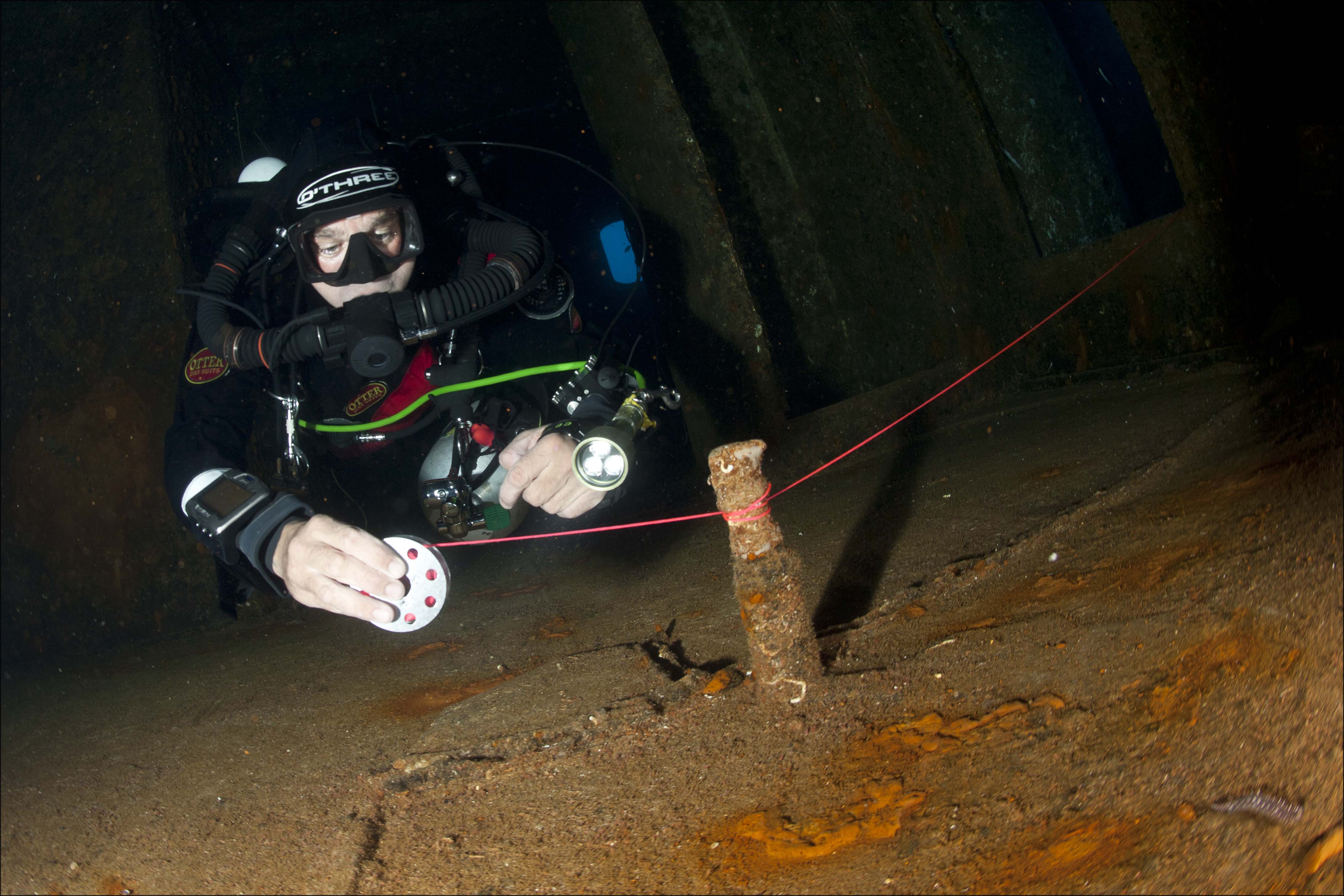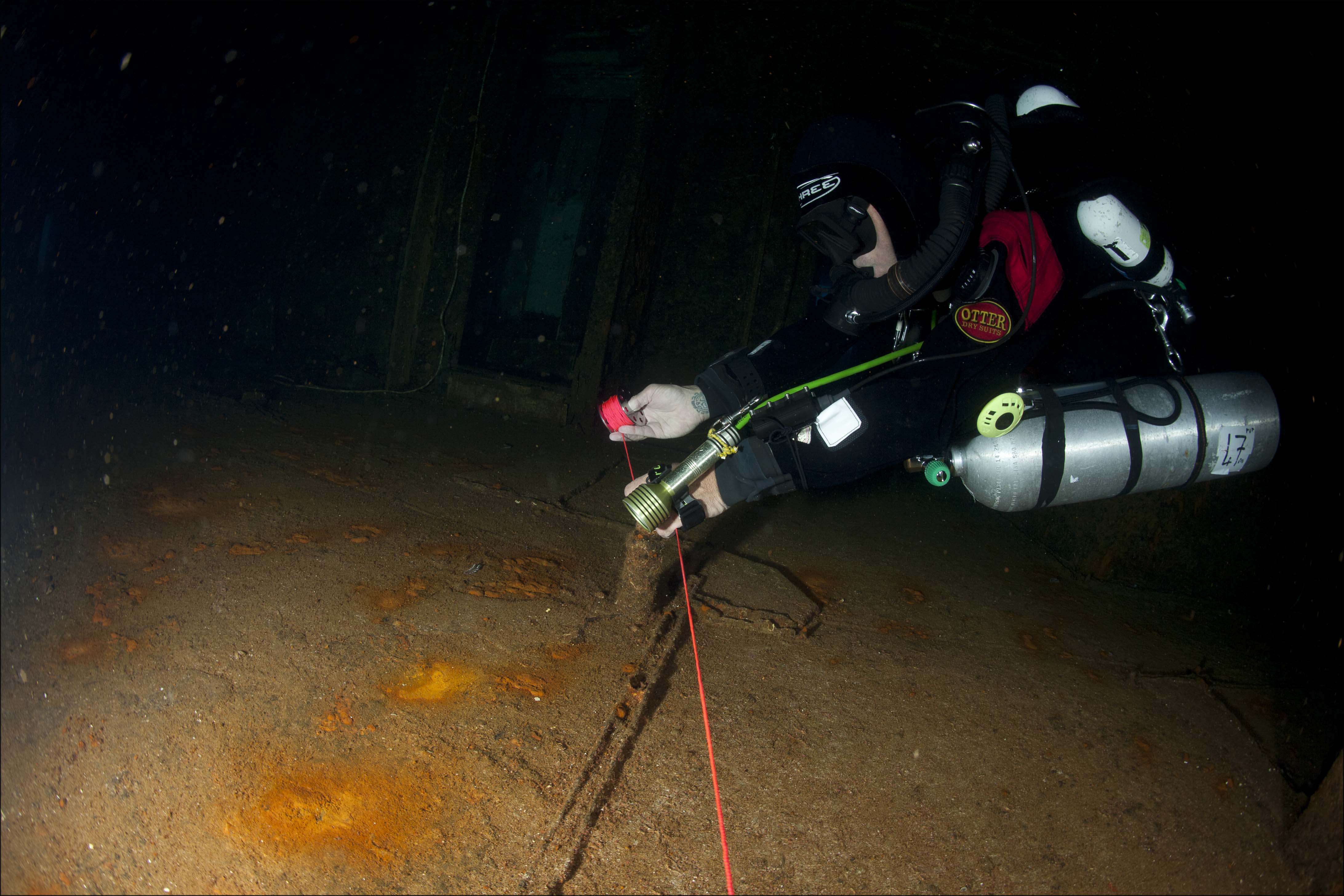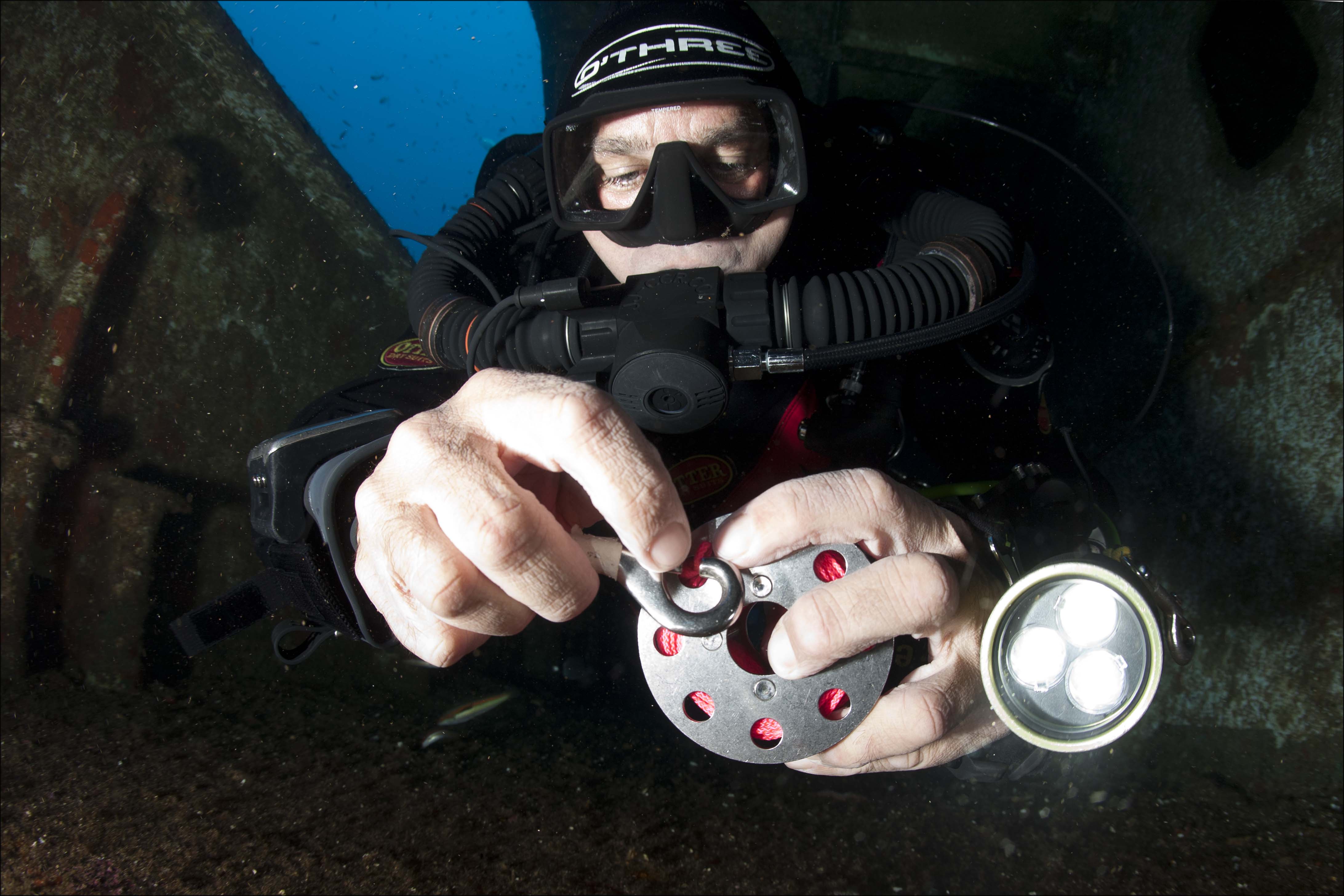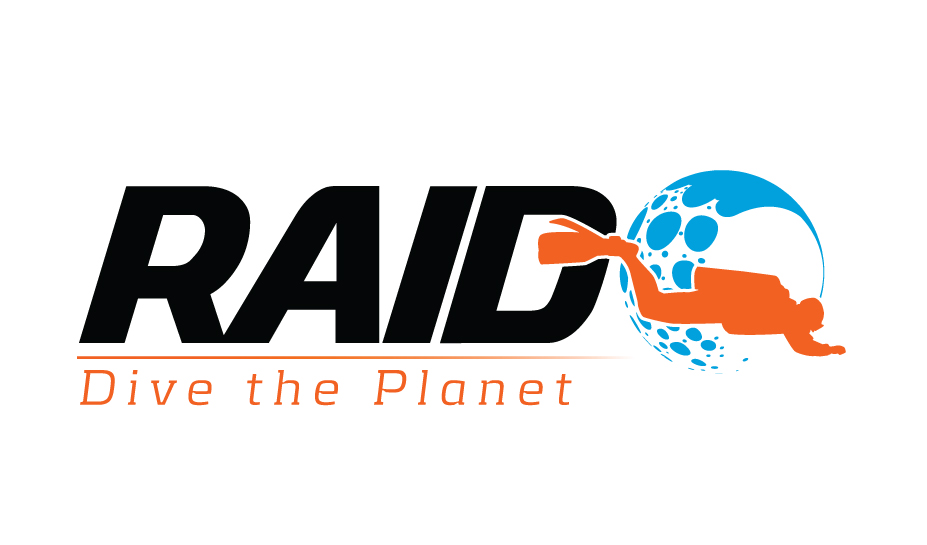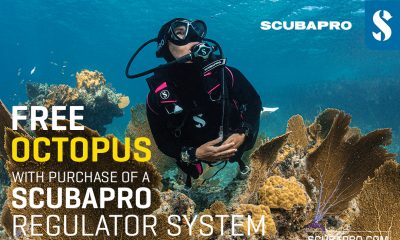News
Paul Toomer: Wreck Head
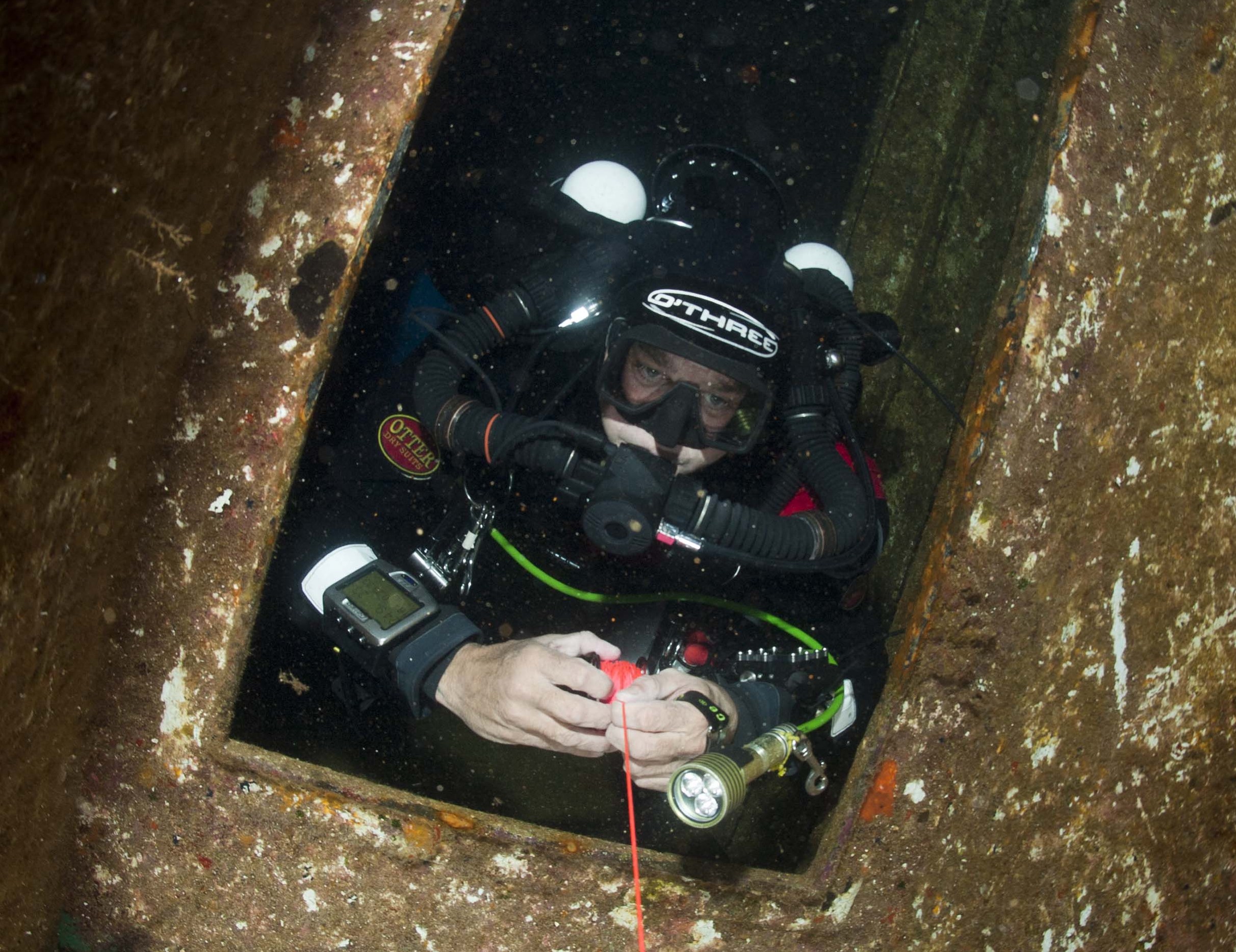
PART 4 – Losing Your Line
Well, here I sit in the world’s tiniest seat next to a lady who has all the duty free on offer on this long haul flight to South Africa laid out all around us. I actually feel more confined than I do when I’m trying to push through some skinny passageway into the bowels of a wreck. I fear if I head to the toilet I may need to line off just to make it safely back to the confines of this hellish nightmare that is “cattle class”!
This month we are looking at more line issues. For me, the worst fears I have, other than gas loss of course, are losing the line or losing a teammate while deep inside a wreck. These are my favourite skills as they are lifesavers and they are also “fierce” in their intensity. Watching Advanced Wreck divers calm themselves internally, and then not only attempt but also succeed in these skills makes my day.
One thing I will say before I explain these drills is that there should NEVER be a reason for anyone to ever have to practise them for real. Following the rules that I set out in the last Wreck Head article should allow you problem free wreck diving. I have done hundreds of penetration dives in caves and wrecks and not once have I had to use these skills in anger.
Let’s look at lost line drill this time and then lost teammate next time round. These drills are harrowing enough, so I am going to space them out a bit, ha ha!
As you know, turning your back on your line is effectively enough to get you lost. Obviously if the visibility is great and your lights are working then relocating your line should (famous last words) be easy. But imagine for a minute that you have no visibility, due to light failure or a silt out and you now have a major sphincter squinting moment. There are a few ways to deal with it but my favourite is quite simply…praying! Now, I don’t mean you whip out your wetnote version of the bible. I mean you adopt the position of utmost respect and get down on bended knee.
As you already know, the best place to tie line is low so we start with that as a basis for the search. The first thing you do upon discovering that you have lost your line and all visibility is get yourself firmly nailed to the floor of the wreck. On your knees! Then take out your emergency reel/spool and find something to tie yourself off to. Now you have your last “known” position so you can’t get any more lost. If possible do a second tie off so you have an angle set from which to start your search. It’s quite incredible to note that most divers actually find the line roughly 180 degrees behind them. So with that in mind simply turn yourself 180 degrees using the line as a reference and then commence your search pattern. With one hand holding the spool use the other hand to make an upward sweep from the floor in an arch as high as you can go without leaving the floor. What you are hoping (and praying I guess) for is that you will make contact with your lost line. If you don’t at first succeed, try, try, try again. Stay very calm, stretch your free arm out along the floor as far as you can go, shuffle forward on your knees and let some line spool out. Then go through the whole ritual again.
There is a chance that you will not find your line and you may move across the room and meet with a wall. What I would advise you do now is gently lift yourself off the floor and reel yourself back down to your anchor point. There is a chance that you may have skipped under your lost line so if you swim back as close to the roof as possible, you may just reel yourself into your line by snagging it from above.
The process explained above needs to be repeated until the viz clears or you snag your line. As you can imagine, even when this is done in a controlled environment during a training programme your heart is going to be bouncing in your chest, so doing this for real must be just terrifying. And it’s little thoughts like this that keep me on my toes and stop me from taking life for granted.
As I mentioned before, there are other methods of searching for lost line and your instructor may show you different techniques. This method is my personal favourite.
As ever, all opinions expressed are my own. I am in no way trying to replace proper instruction. My opinions may differ from agency to agency and instructor to instructor and I do not wish to disrepute any of them.
Paul is the Director of Training at RAID. To find out more about the courses that RAID offers, visit www.diveraid.com.
Blogs
The Ocean Cleanup Breaks 10,000,000 KG Barrier

The Ocean Cleanup, the global non-profit project, has removed a verified all-time total of ten million kilograms (22 million lbs.) of trash from oceans and rivers around the world – approximately the same weight as the Eiffel Tower.
To complete its mission of ridding the oceans of plastic, The Ocean Cleanup uses a dual strategy: cleaning up the Great Pacific Garbage Patch (GPGP) to remove the plastic already afloat in the oceans, while stopping the flow of plastic from the world’s most polluting rivers.
Through cleaning operations in the GPGP and in rivers in eight countries, the cumulative total of trash removed has now surpassed ten million kilograms. This milestone demonstrates the acceleration of The Ocean Cleanup’s impact, while underlining the astonishing scale of the plastic pollution problem and the need for continued support and action.
While encouraging for the mission, this milestone is only a staging point: millions more tons of plastic still pollute our oceans and The Ocean Cleanup intends to continue learning, improving and innovating to solve this global catastrophe.
This announcement comes as governments from around the world meet to continue negotiations to develop a new legally binding instrument to end plastic pollution at INC4 in Ottawa, Canada. Representatives of The Ocean Cleanup will be in attendance and the organization will be urging decision-makers to collaborate towards a comprehensive and ambitious global treaty which addresses plastic at all stages of its life cycle and in all marine environments worldwide, including in areas beyond national jurisdiction.
It is encouraging to see that the need for remediation is reflected in the various options for potential treaty provisions. It is essential that the final treaty contains clear targets for the remediation of legacy plastic pollution, and reduction of riverine plastic emissions.
Tackling plastic pollution requires innovative and impactful solutions. The treaty should therefore incentivize the innovation ecosystem by fostering innovations that make maximal use of data, technology and scientific knowledge – such as those designed and deployed by The Ocean Cleanup.
‘After many tough years of trial and error, it’s amazing to see our work is starting to pay off – and I am proud of the team who has brought us to this point.’ said Boyan Slat, Founder and CEO of The Ocean Cleanup. ‘While we still have a long way to go, our recent successes fill us with renewed confidence that the oceans can be cleaned.’
The Ocean Cleanup was founded in 2013 and captured its first plastic in 2019, with the first confirmed catch in the GPGP coming soon after the deployment of Interceptor 001 in Jakarta, Indonesia. After surpassing one million kilograms of trash removed in early 2022, the non-profit project has since progressed to the third iteration of its GPGP cleaning solution, known as System 03, and a network of Interceptors currently covering rivers in eight countries, with more deployments set for 2024.
About The Ocean Cleanup
The Ocean Cleanup is an international non-profit organization that develops and scales technologies to rid the world’s oceans of plastic. They aim to achieve this goal through a dual strategy: stemming the inflow via rivers and cleaning up the legacy plastic that has already accumulated in the ocean. For the latter, The Ocean Cleanup develops large-scale systems to efficiently concentrate the plastic for periodic removal. This plastic is tracked and traced through DNV’s chain of custody model to certify claims of origin when recycling it into new products. To curb the tide via rivers, The Ocean Cleanup has developed Interceptor™ solutions to halt and extract riverine plastic before it reaches the ocean. Founded in 2013 by Boyan Slat, The Ocean Cleanup now employs a broadly multi-disciplined team of approximately 140. The foundation is headquartered in Rotterdam, the Netherlands.
For more information, visit: theoceancleanup.com and follow @theoceancleanup on social media.
Marine Life & Conservation
Steve Backshall to headline Shark Trust’s flagship event: For the Love of Sharks

Join a host of amazing, shark loving, speakers including Steve Backshall and the Shark Trust team for an evening celebrating shark conservation at the Royal Geographical Society in London this November.
Date: 29th November 2024
Time: 6-10pm
Location: Royal Geographical Society, London
Tickets: https://www.sharktrust.org/Event/flos24
The event will be a celebration of all things shark. Those lucky enough to get hold of tickets will hear from engaging guest speakers with a passion for sharks.
The line-up includes (*subject to change if unforeseen circumstances arise)
Steve Backshall: One of television’s busiest presenters, BAFTA award-winning wildlife expert Steve has been passionate about the wild world ever since he was young.
Steve’s impressive TV career has taken him all around the world, investigating a wide array of species and environments. Steve has filmed over 100 hours of children’s wildlife programmes with the BAFTA award winning Deadly 60 franchise and recently, with Sky Nature, for his new series ‘Whale with Steve Backshall’. He has been a patron for the Shark Trust for 10 years.
Simon Rogerson: is a photojournalist specialising in natural history, diving and the sea.
He is editor of SCUBA magazine, the official journal of the British Sub-Aqua Club. Simon started his career as a crime reporter but gravitated towards his ‘less depressing’ interest in underwater exploration, joining the staff of DIVE magazine in 1999. In 2005 he was named ‘Editor of the Year’ in the PPA’s Independent Publishing Awards. Simon also works as a freelance writer, contributing frequently to the Sunday Times and Telegraph, in addition to BBC Wildlife, Esquire, and a host of international diving magazines. He is the author of a book, Dive Red Sea, published by Ultimate Sports. Now based in Berkshire, Simon has been a Patron of the Shark Trust for 20 years.
More speakers to be announced soon. Head to the Shark Trust website to learn more.
The evening will also allow guests the final chance to see the Oceanic 31, shark art exhibition. Some of the artwork will be auctioned/raffled at the event, while the rest will be auctioned online to raise money for the Shark Trust Oceanic Programme.
For the Love of Sharks is an evening with something for everyone who is interested and fascinated by sharks. Join the Shark Trust, their Patrons, Trustees and Staff, along with a host of supporters for this celebration of shark conservation.
For more information or to buy a ticket: https://www.sharktrust.org/Event/flos24
-

 News3 months ago
News3 months agoCapturing Critters in Lembeh Underwater Photography Workshop 2024: Event Roundup
-

 Marine Life & Conservation Blogs3 months ago
Marine Life & Conservation Blogs3 months agoCreature Feature: Swell Sharks
-

 Blogs2 months ago
Blogs2 months agoMurex Resorts: Passport to Paradise!
-

 Blogs2 months ago
Blogs2 months agoDiver Discovering Whale Skeletons Beneath Ice Judged World’s Best Underwater Photograph
-

 Gear Reviews3 weeks ago
Gear Reviews3 weeks agoGEAR REVIEW – Revolutionising Diving Comfort: The Sharkskin T2 Chillproof Suit
-

 Gear Reviews3 months ago
Gear Reviews3 months agoGear Review: Oceanic+ Dive Housing for iPhone
-

 Marine Life & Conservation2 months ago
Marine Life & Conservation2 months agoSave the Manatee Club launches brand new webcams at Silver Springs State Park, Florida
-

 News2 months ago
News2 months agoPADI Teams Up with Wellness Brand Neuro to Drive Ocean Change and Create a Blue State of Mind


